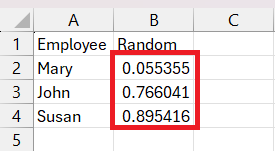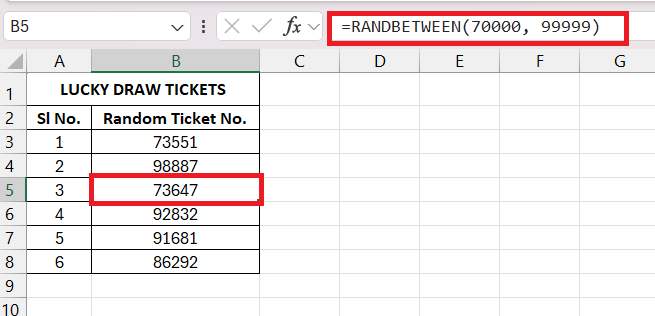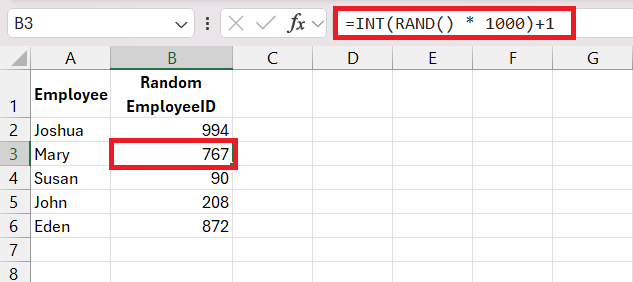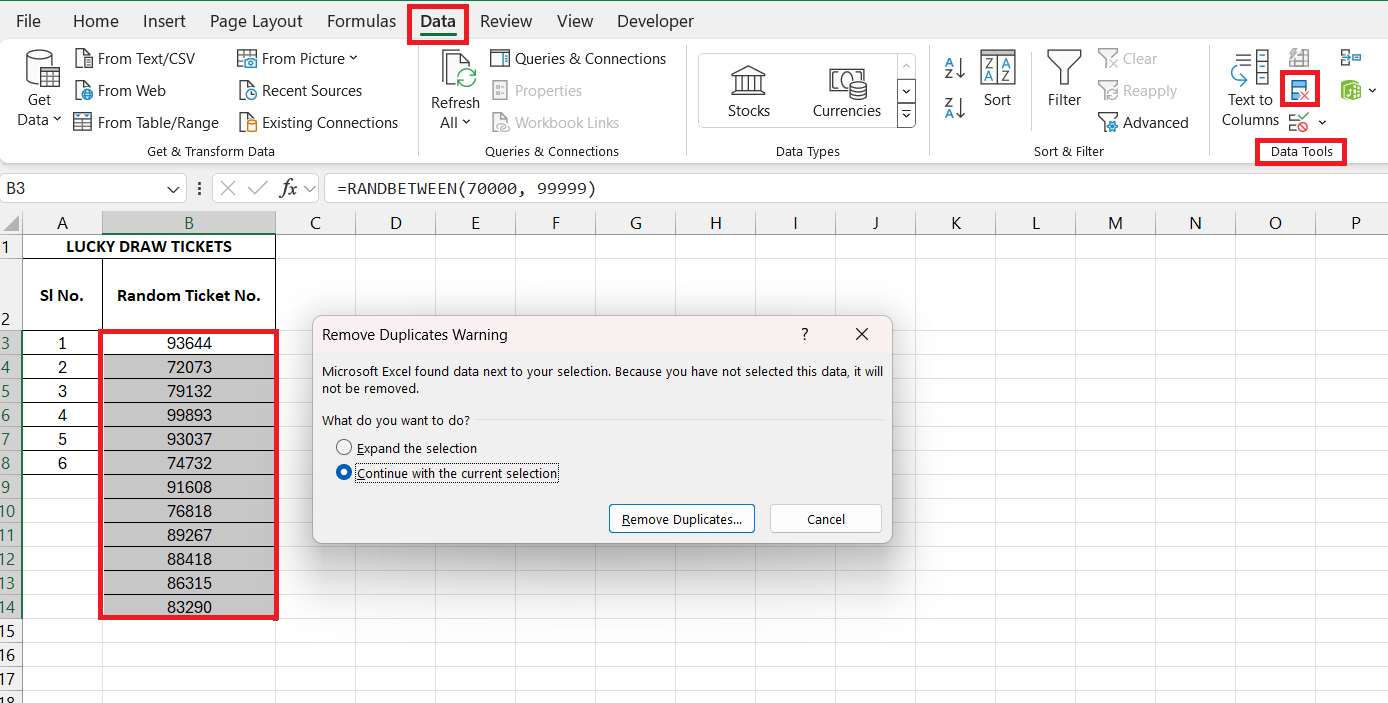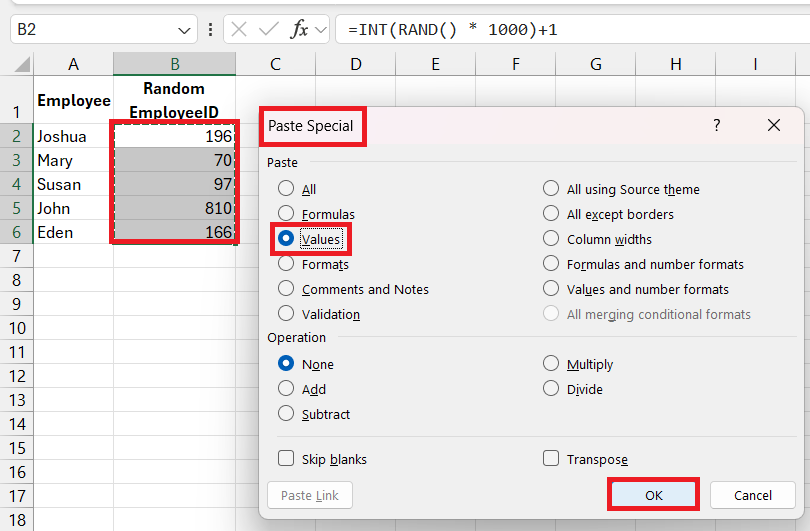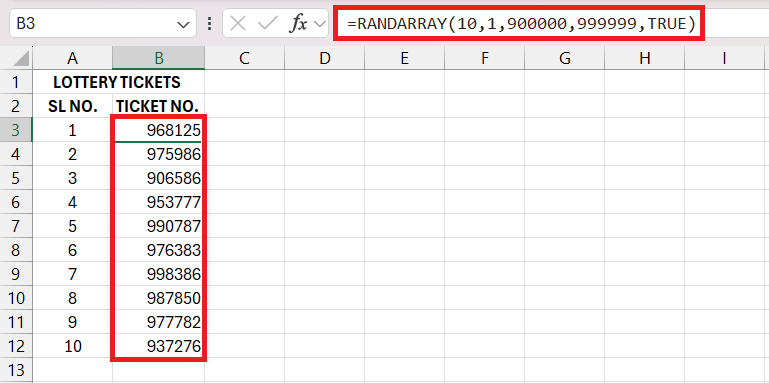The RAND function in Excel generates random numbers between 0 and 1, offering a simple way to introduce randomness into your data. Whether you’re simulating data, performing probability analysis, or creating random assignments, RAND can be a versatile tool in many scenarios.
Key Takeaways:
- RAND generates random decimal numbers between 0 and 1.
- The function recalculates every time the worksheet updates.
- Use RANDBETWEEN for generating random integers within a specified range.
- To freeze random values, convert the RAND formula results into static values.
- Advanced options like RANDARRAY can generate multiple random numbers at once.
Table of Contents
Dive into the World of Randomness
Unveiling the RAND Function
Delving into the heart of Excel’s capabilities, I often encounter a powerhouse in the realm of randomness – the RAND function. This nifty tool sits within Excel’s extensive toolkit, serving mainly one function: generating a decimal number between 0 and 1.
Whenever I open or recalibrate a spreadsheet, this function never fails to deliver a brand-new, completely random number. Its effortless simplicity means no parameters are required; a simple =RAND() suffices.
Boosting Productivity with Quick Random Data
I’ve often leveraged the RAND function to swiftly conjure random data for testing purposes. Excel’s ability to rapidly populate spreadsheets with random figures can dramatically expedite the preliminary phases of data analysis and software development.
By swiftly generating test values, we can probe the resilience of a model or system without the arduous task of manual data entry. Beyond testing, random data can facilitate training workshops or academic sessions, where example datasets are required on the fly.
The practicality of such quick, random data generation solidifies the RAND function as a veritable tool in any productivity toolkit.
Navigating the Excel RAND Function
Syntax Breakdown and Parameters
Let’s dissect the RAND function’s syntax, an aspect I find quite straightforward yet potent. The function, as I mentioned earlier, requires no user-defined parameters. Its simplicity is encompassed in the complete lack of arguments: =RAND().
This minimalistic approach epitomizes user-friendly design—there’s no need to fuss with inputs to achieve the desired outcome of a random decimal number between 0 and 1.
But when we move from RAND to RANDBETWEEN, there’s a pivot to specificity. The syntax for RANDBETWEEN is =RANDBETWEEN(bottom, top), where ‘bottom’ denotes the smallest integer you wish to generate, and ‘top’ the largest.
This function gives us control over the range of our random numbers, adhering strictly to the integer domain.
Using RAND to Generate Different Types of Random Values
RAND’s application extends beyond merely producing numbers between 0 and 1. By manipulating the output with other Excel functions, I can mold it to generate diverse types of random values.
For instance, multiplying the RAND result by a number scales it up to produce a broader range of decimal numbers. To create integer values, I can truncate the decimals by wrapping the RAND function inside an INT function, like so: =INT(RAND()*value)+1.
For dates, I might use =RAND()*(DATE(year,month,day)-DATE(year2,month2,day2))+DATE(year2,month2,day2) to conjure random dates within a given range.
Advanced Tips for Random Number Mastery
Fine-Tuning Randomness with Special Formulas
Going a step further into Excel’s engine room, I employ special formulas to fine-tune randomness. When a situation calls for weighted probability—maybe certain events should occur more frequently than others—I intertwine the RAND function with other Excel functionalities.
By using lookup tables and the MATCH function with RAND, I can simulate weighted randomness. For creating random times at specific intervals, the RAND function again becomes invaluable when combined with the TIME function to specify intervals: =TIME(INT(RAND()*24),INT(RAND()*60),0) for a random time to the nearest minute, for example.
When a regular distribution of random numbers is necessary, the built-in data analysis tool comes into play. I would use it to generate a set of numbers that conform to a particular statistical distribution, tweaking randomness to suit the exact requirements of the data model.
Ensuring Uniqueness in Your Random Data Sets
To guarantee uniqueness in a random data set — say, a list of lottery tickets or unique user IDs — I begin with the RAND or RANDBETWEEN function. Awareness is key here: neither function alone promises unique values. So, I created a larger set than needed, as this net will undoubtedly catch duplicates that I’ll need to release later.
After generating the random numbers, I ensure they are committed in stone by converting the formulas to values. This is crucial, as, without this step, the numbers would continue to shuffle with each worksheet calculation. The process can be visualized as setting jelly into a mold—once set, the shape holds firm.
With my data solidified, duplicates are pruned using Excel’s built-in ‘Remove Duplicates’ function or advanced tools like Duplicate Remover for Excel.
Troubleshooting Common RAND Function Pitfalls
Addressing Automatic Recalculation Challenges
The challenge with RAND is its volatile nature: a recalculation occurs every time the worksheet recalculates, changing all RAND-generated values. However, when I need a static set of random numbers, there’s a workaround.
After generating random numbers, I transform the formulas into static values. This is simply done by selecting the cell, copying it, and using ‘Paste Special > Values’.
This technique effectively ‘freezes’ the random numbers, preventing any future recalculations from altering them. It’s akin to taking a photograph of the numbers; once captured, they remain unchanged, providing a snapshot of randomness at a point in time.
Pushing Boundaries with Extended Functions
Introducing the RANDBETWEEN and RANDARRAY
RANDBETWEEN expands upon RAND by offering the ability to specify a range for random number generation, allowing for a wider scope of applications. With two arguments – the bottom and top numbers of the range – you receive an integer within this boundary every time. It’s perfect when I need a random integer rather than a decimal. For example, =RANDBETWEEN(1, 10) will give a random number from 1 to 10.
Then there’s the newer RANDARRAY function, a versatile addition to Excel’s arsenal in the Office 365 suite. It grants the capability to produce an array of random numbers all at once. Rather than copying a formula down a range, RANDARRAY does the heavy lifting in a single stroke, with parameters to specify the number of rows and columns of random numbers you need. This function is a boon when you’re dealing with large data sets that require bulk random numbers.
Frequently Asked Questions (FAQs)
How to use a rand function in Excel?
To use the RAND function in Excel, simply enter =RAND() in a cell. After pressing “Enter,” Excel generates a decimal number between 0 and 1. If you need a series of random numbers, drag the cell corner to fill adjacent cells with random values. Each cell recalculation will result in different numbers, providing dynamic randomization at its finest.
How Can I Generate a Random Integer Within a Specific Range?
To generate a random integer within a specific range in Excel, use the RANDBETWEEN function: =RANDBETWEEN(bottom, top). Replace ‘bottom’ with your range’s lowest integer and ‘top’ with the highest integer. For example, =RANDBETWEEN(1, 100) will produce a random integer between 1 and 100. Each recalculation of the worksheet or the function will yield a new random integer.
What is the Difference Between RAND and RANDBETWEEN Functions?
The main difference between the RAND and RANDBETWEEN functions lies in the type and range of values they return. RAND generates a decimal number greater than or equal to 0 and less than 1. Conversely, RANDBETWEEN returns a random integer within a specified range determined by its two integer arguments. Use RAND for decimals, and RANDBETWEEN when specific integer boundaries are needed.
How Do I Stop the RAND Function from Recalculating?
To stop the RAND function from recalculating, convert the formula’s output to static values. After generating random numbers with RAND, copy the cells and then use ‘Paste Special > Values’ in a new location or the same cells. This replaces the dynamic formula with its current value, preventing future recalculations from altering the numbers.
Can I Generate Unique Random Numbers Using the RAND Function?
No, the RAND function alone cannot guarantee unique random numbers as it generates new values upon each recalculation. To create unique random numbers, generate a random list using RAND, convert the numbers to static values, and use the ‘Remove Duplicates’ feature to eliminate any repetitions. For more control, combine RAND with additional functions or utilize the more advanced RANDARRAY function in Excel 365, which includes an optional ‘unique’ argument for this purpose.
John Michaloudis is a former accountant and finance analyst at General Electric, a Microsoft MVP since 2020, an Amazon #1 bestselling author of 4 Microsoft Excel books and teacher of Microsoft Excel & Office over at his flagship MyExcelOnline Academy Online Course.


